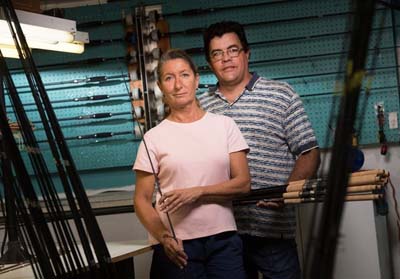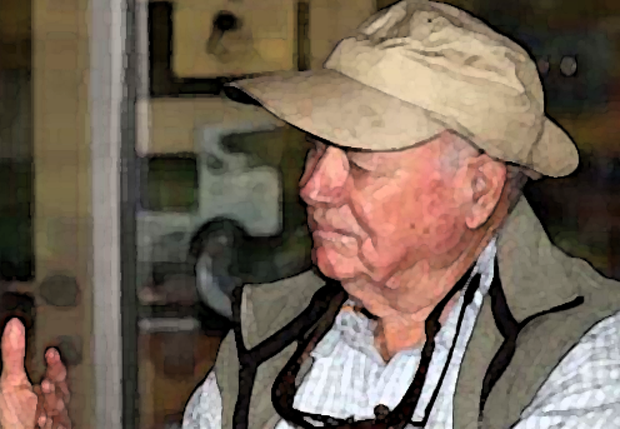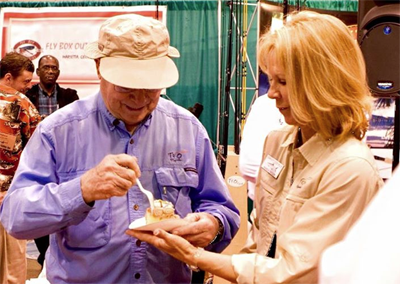Why not teach fly casting in a way that keeps them coming back?
[dropcap]I [/dropcap]am not a rod builder, Federation of Fly Fishers Certified Casting Instructor, Orvis Endorsed Guide, professional guide or fly shop owner. However, I have observed more than I can remember teaching events in which a headliner/advanced fly casting instructor pitches a fly over a 100-feet. Everyone says, “Wow!” Also, I have attended too many to count fly fishing expos as well as fly fishing shows in which the casting instructors pitch flies the length of the casting pool. Everyone says, “Wow!” Too, I have watched several students engaging with a casting instructor at fly shops and instructional camps and at big box store roundups. Sometimes I attended the latter for the story (promoting the fly shop and/or fly fishing) that would be sold to a magazine, printed in a magazine I was either editor-in-chief or publisher. My point is that most, not all, newbies in the described situations came away from the baptismal dip disappointed.
If you give them a fast action set up, they won’t come back
Paraphrasing here. An American Sport Fishing Association survey/study concluded (two or so years ago) that the drop-out rate for new to fly fishing (a solid number of these newbies were fisherpersons of another religion) was north of 70%. The drop out reason given was that casting is too difficult (over 90%).
So, we do have an identifiable problem
The fix, in my opinion, is not watching Steve or Tim Rajeff cast their supped up fly rods 16 football fields (although it is fun to watch) or handing a newbie a stick with a hunk of wool on it and telling him or her to wave at the fire engines in the parade (sorry, just do not like that teaching tool). That tool is called The Office by TFO (other makers have different names). It is a short, lightweight and specially constructed reel-less fly rod with a length of yarn attached – serving as the fly line.
Lefty and Wanda
Lefty Kreh, father of modern fly fishing and Wanda Taylor, are about the best at walking through, talking through and demonstrating fly casting. They never talk distance, only mechanics and identifying how to feel the line load the rod and ‘seeing’ the loop. Everything they teach is one step at a time; A leads to B and so on. Wanda once said: “It took a lot of time to go back to my beginnings and remember what the stumbling blocks were. Once I had that, and my students reinforced those things as they progressed, I became very comfortable getting folks out of the starting blocks.”
Why then are all these excellent instructors part of the drop out equation?
A few weekends ago, I was invited by Bubba Eberle, a fly fishing Georgian of the most talented kind, to fish for largemouth bass at his stocked, private pond west of Atlanta. The pond was a meandering affair of a reported five acres. Remarkably, it was fairly non-Georgia brown in color. You could see structures and holes.

Margot and Dave Redington of Stuart, Florida are typical of the fiberglass rod industry in the U. S. Small shops with gifted crafts folks. South Fork Rod Company image.
Bubba’s friend Tom, the other invitee, met us there. Bubba said Tom was really into fly fishing and when it came to teaching, he was a true “whisperer.” Tom had his two grands and a neighbors kid in tow. One boy and two girls ranging in age from 10 to early teens. All had cast a fly rod before. Tom’s oldest grand was good. Tom said she was his regular companion on weekends. Tom had brought two glass fly rods he used for teaching. Both were Cabela’s CGR rods he said he bought for less than $50 each online. They looked brand new and were strung up with Cabela’s matching line weight offerings.
Tom firmly believes that fiberglass rods are the answer to fast track learning and more importantly, enlisting new fly anglers into our ranks
The rods were distinctly buttery-soft (to me). The feel of line loading was captured by the kids in less than 10 minutes. Tom was better then a proficient instructor. He waxed eloquently about what the ‘students’ would soon feel, and how to take it to the hoop from there. Single haul matured into double haul with nary a hiccup by any of the kids. It was remarkable.
Tom is a firm believer that teaching with short, 3-, 4-weight fiberglass rods with matching fly line is the only way to get folks casting to enjoy it and to keep coming back to fly fishing. Why so I asked? “Well, he said: “It is in the magic of almost any fiberglass fly rod that is in the lower weights and much shorter than the standard of 9-feet. The feel of line load is just about instantaneous for everyone.”
He said at that point they will almost automatically produce a nice loop, not a loop expected from a fast action graphite, but one that works out just fine. From there, he went on, it is a matter of reinforcing and slow adding roll casts, water hauls and the rest.
For more on fiberglass rods read Cameron Mortensen’s 2013 interview with Fly Fisherman . . .
NOTE: Featured Image is of Lefty Kreh at the 2013 BTT Symposium. Clement image.




Do you guys know if South Fork Rod company is still in business? The webpage is gone.